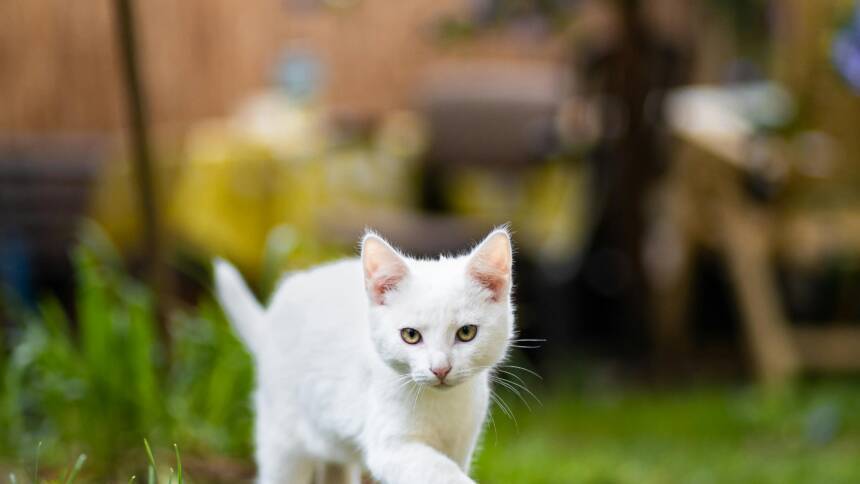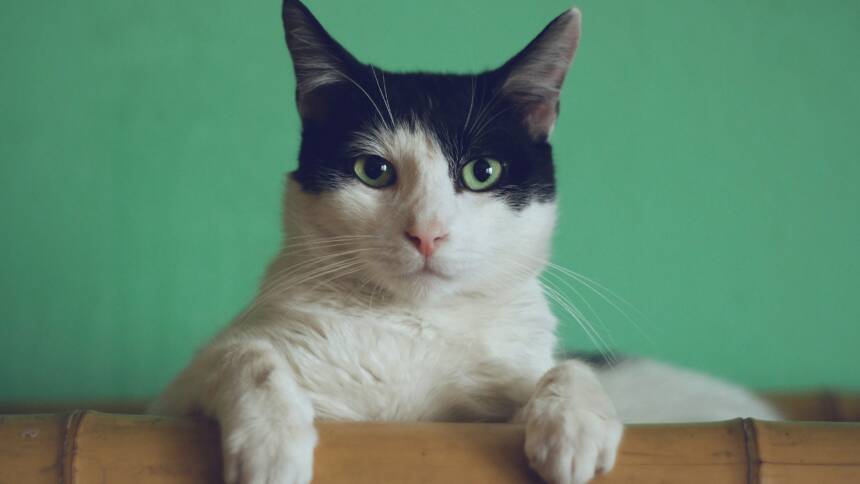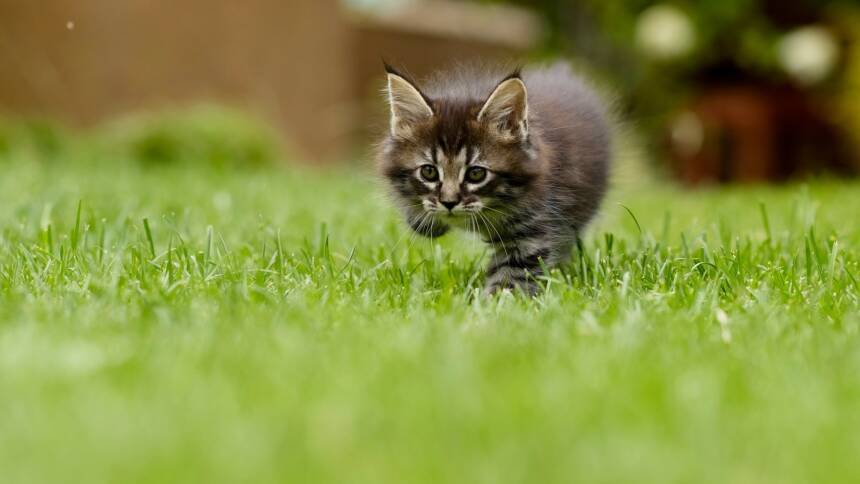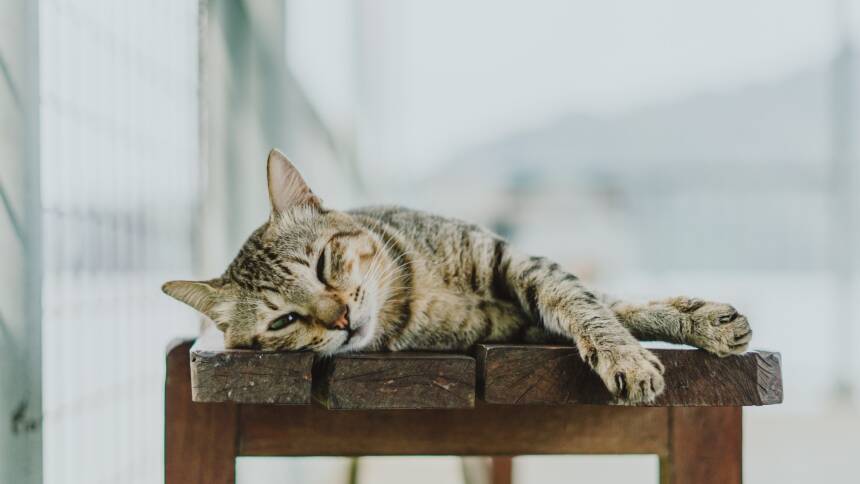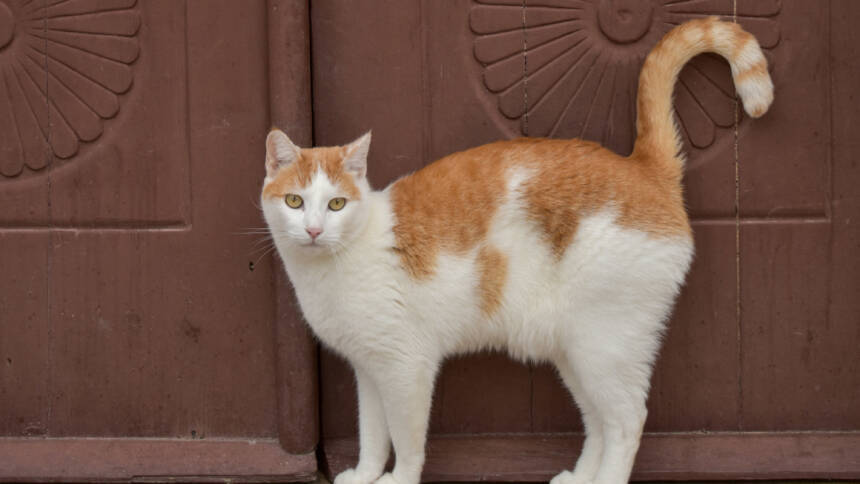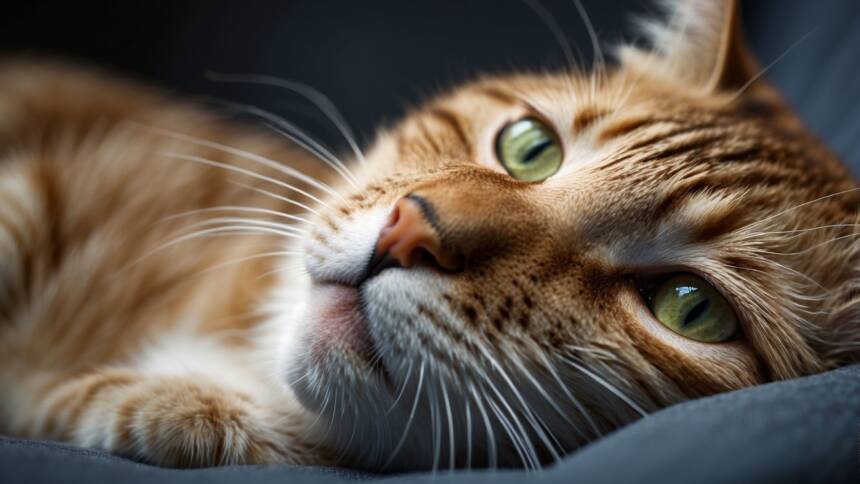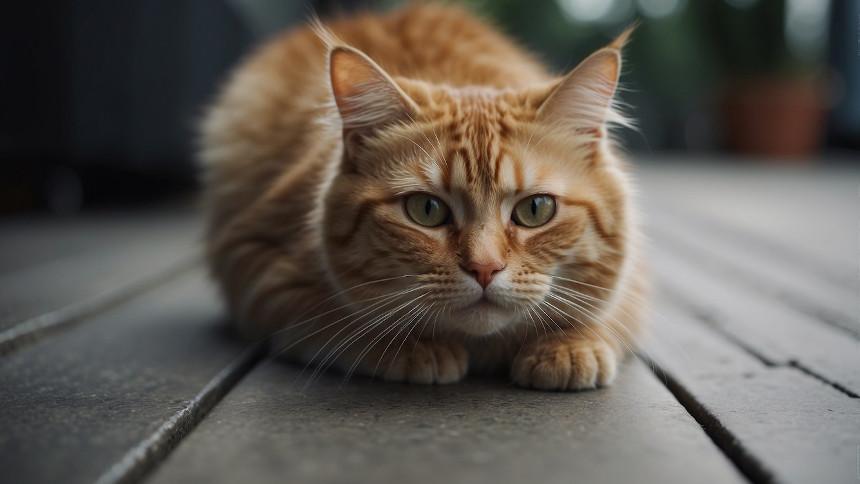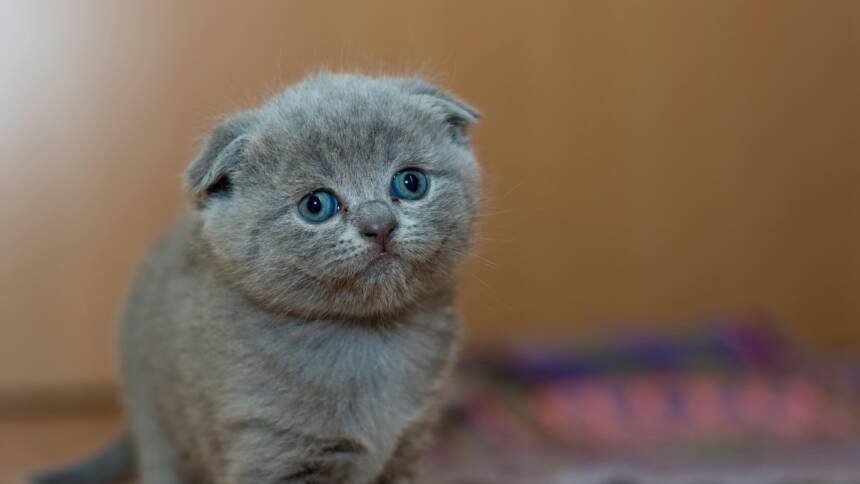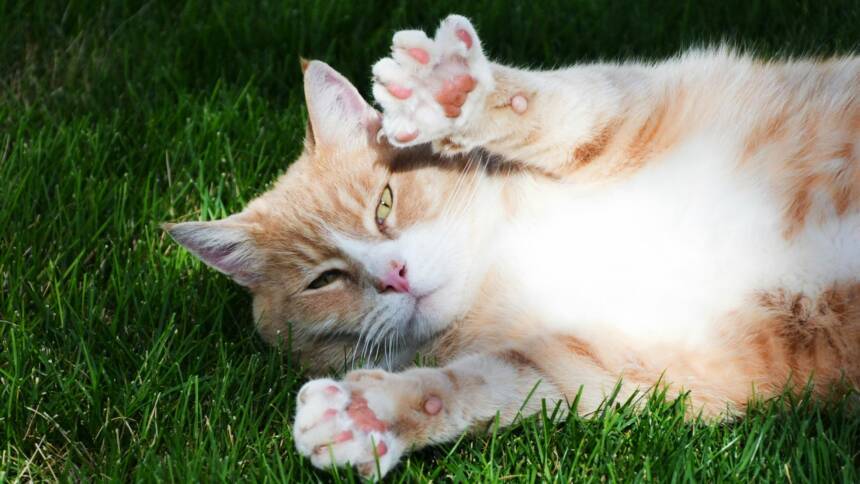Cat zoomies are sudden bursts of energy where cats will run around the house at high speeds, often engaging in playful and erratic movements. This behavior, while amusing to watch, is a common and entirely normal part of feline behavior. Often these energetic spurts occur after a cat has used the litter box. This can be attributed to a sense of relief or the physical sensation of lightness following the elimination of waste. Such activity serves as an instinctive expression of a cat’s agility and predatory prowess.
Observing a cat exhibit the zoomies, particularly after peeing, should not immediately be a cause for concern. Cats naturally have periods of increased activity and rest, and the zoomies are a way for them to release pent-up energy. This is especially prevalent in kittens and younger cats, who have an abundance of energy to burn. For indoor cats, engaging in such high-energy activity is beneficial as it provides exercise and mental stimulation, mimicking the natural hunting behaviors they would exhibit in the wild.
While zoomies are typically a normal and healthy behavior, it is crucial for cat owners to remain alert to the frequency and context of these bursts of energy. Consistent patterns of hyperactivity after using the litter box can simply be a part of a cat’s routine, but significant changes in this behavior could indicate underlying health issues. Therefore, it’s essential to pay attention to your cat’s overall behavior and consult with a veterinarian if there are any signs of distress or notable changes in litter box habits.
Understanding Cat Zoomies
Cats often display a sudden burst of energy known as zoomies, where they run around with seemingly endless vigor. This behavior reflects a blend of natural instincts and physiological responses.
Zoomies Explained
The term “zoomies” refers to Frenetic Random Activity Periods (FRAPs), where cats suddenly race around their environment. These episodes typically involve spurts of high energy, described by veterinarians as a normal part of feline behavior. During zoomies, a cat may exhibit behaviors such as dashing across rooms, rapidly changing directions, and occasionally pausing before resuming their frantic activity. This can be attributed to an adrenaline rush or a natural manifestation of their hunting instincts.
Common Triggers
Several triggers can prompt a cat into having zoomies, with varying underlying reasons:
- Excess Energy: Indoor cats especially may have pent-up energy that they release through zoomies. Regular, interactive playtime is advised to mitigate this.
- Post-Elimination Reaction: Some cats experience zoomies after using the litter box. This may be linked to a physiological response related to the vagus nerve or an instinctive urge to flee from the scent left behind, avoiding predators.
- Stress or Excitement: A sudden burst of energy might also be an outlet for cats to cope with stress or express playful excitement.
- Health Concerns: Occasionally, underlying medical issues can cause erratic behavior. It’s important for owners to observe their pet and consult a veterinarian if such behaviors are new or accompanied by other symptoms.
Behavioral Aspects
Cats exhibit zoomies as a part of their complex behavior patterns, often influenced by instinctual drives and specific post-elimination rituals.
Cat Behavior Patterns
Cats are crepuscular, meaning they are most active during dawn and dusk. This aligns with their natural predation times in the wild, where their instincts as hunters are at their peak. Cat zoomies can occur when they have pent-up energy, especially after periods of rest or inactivity.
Instinctual Drives
The drive to exhibit zoomies in cats can be attributed to their survival instincts. These bursts of energy may mimic the hunt-and-chase behavior they would naturally engage in as predators. The actions of running and pouncing allow them to hone their skills and engage in mental stimulation.
Post-Poop Rituals
Post-elimination bursts of activity, or “post-poop zoomies,” may provide cats with a sense of relief or may be an instinctual effort to distance themselves from the scent of waste, which could attract predators. Following elimination, cats may feel lively and invigorated, leading to these sudden energetic displays.
Litter Box Habits
In observing feline behavior, it is not uncommon to notice a burst of energy, or “poop zoomies,” following the use of a litter box. Understanding why this happens necessitates a look into their litter box habits and potential digestive issues that might cause discomfort.
Cats and Their Litter Boxes
Cats have an inherent desire for cleanliness, which extends to their use of the litter box. They typically bury their poop to hide their scent from predators and other cats. This behavior is deeply rooted in their instincts. The ritual of covering their waste can be seen as a sign of healthy litter box habits. Additionally, cats may experience a sense of relief after pooping, which can manifest in a sudden surge of energy or poop zoomies. This reaction might also be attributed to the activation of their vagus nerve, which is involved in bowel movements and can stimulate a variety of bodily responses.
Potential Issues After Pooping
When a cat experiences discomfort during or after pooping, it can lead to unusual posturing or actions. For example:
- Constipation: A cat that is straining or spending an extended time in the litter box may be constipated. This can result in discomfort and erratic behavior post-poop.
- Digestive Issue: If a cat is seen frequently licking their anal region or showing signs of discomfort after using the litter box, this may indicate a digestive issue.
- Relieving Discomfort: A cat may instinctively run around after pooping as a means of relieving any residual discomfort.
These behaviors can signal to the owner that the cat may require a check-up to rule out potential medical concerns.
It’s essential for owners to monitor their cat’s litter box habits and seek veterinary advice if they observe significant changes. Changes could involve alterations in poop consistency, frequency, or unusual post-litter box behavior.
Health and Zoomies
Cat zoomies, or bouts of hyperactivity, are usually harmless. They might occur after a cat uses the litter box. However, if there is excessive or abrupt change in behavior, it can be a signal for potential health issues that may require a veterinarian’s attention.
When to Consult a Vet
Owners should observe the frequency and intensity of zoomies. It’s advisable to consult a veterinarian if an aging cat suddenly develops excessive zoomies or if there are accompanying signs like:
- Vomiting: Unrelated to hairballs or diet changes
- Itchy skin or evidence of fleas: Persistent scratching or biting at the skin
- Pain or discomfort: Indicated by meowing or reluctance to move
- Urinary Tract Issues: Straining to urinate, blood in urine, or frequent urination
A professional assessment can rule out or confirm issues such as urinary tract infections, arthritis, hyperthyroidism, or anxiety.
Recognizing Health Problems
Several indicators should alert the owner to potential underlying health conditions:
- Pain: Could manifest as reluctance to be touched or move.
- Infection: Look for symptoms such as fever or lethargy.
- Anxiety: Excessive grooming or changes in appetite could be signs.
- Hyperthyroidism: Sudden weight loss or increased appetite may occur.
Furthermore, if a cat is on medication, monitoring for behavioral changes is essential. If an aging cat’s zoomies are paired with stiffness or difficulty jumping, it could suggest arthritis. Any persistent unusual behavior warrants a veterinarian visit to ensure the cat’s health and well-being.
Energetic Patterns
Cats often display a burst of energy after peeing, a phenomenon commonly known as the “zoomies.” This behavior can be attributed to their instinctual need to manage excess energy and stay stimulated through play.
Managing Excess Energy
The “zoomies,” especially in indoor cats, are a natural response to the need for exercise and stimulation. For indoor cats, the home environment is their main source of activity, and unlike their outdoor counterparts, they must find creative ways to expend energy within the confines of the space. Their sudden energetic bursts after eliminating waste can be seen as a coping mechanism to maintain their physical and mental health.
To facilitate healthy energy management, cat owners should observe their cat’s patterns of activity. Typically, cats are most active during dawn and dusk. Incorporating playtime during these hours can help cats regulate their energy and prevent episodes of extreme excitement or hyperactivity.
Toys and Play Techniques
Interactive toys and play techniques are essential in simulating the hunting experiences cats would naturally undergo. Engaging indoor cats in interactive play sessions can help mimic the predator-prey chase that allows them to release pent-up energy in a controlled manner.
- String Toys: Mimic the movement of prey and encourage your cat to chase and pounce.
- Laser Pointers: Activate your cat’s predatory instincts through the pursuit of a moving target.
- Puzzle Feeders: Combine playtime with mealtime to keep your cat both mentally and physically involved.
Playtime with these interactive toys should be encouraged regularly to ensure that indoor cats have an outlet for their energy, reducing the likelihood of random spurts of excitement such as the post-pee zoomies. Remember, the key is to mimic natural behaviors—keeping play sessions spontaneous and unpredictable can make a significant difference.
Environmental Influences
The environment where a cat resides can significantly impact their behavior, including the occurrence of zoomies, the frenetic random activity periods (FRAPs) exhibited by cats.
Indoor Versus Outdoor Cats
Indoor cats often have limited space to explore and hunt, which can cause pent-up energy that gets released in the form of zoomies. In contrast, outdoor cats, which behave more like their wild ancestors, may have more opportunities to expend energy through natural predatory behaviors such as stalking and chasing. As a result, indoor cats may experience zoomies more frequently, as they look for ways to satisfy their instinctual needs within the confines of a home.
- Indoor Cats:
- May have zoomies due to less space and fewer stimuli.
- Require playtime to help with weight loss and to simulate hunting.
- Outdoor Cats:
- Less likely to display zoomies due to a stimulating environment.
- Engage in natural behaviors that expend energy more consistently.
Effects of Domestication
Domestication has transformed cats into household companions, but it has not eliminated their nocturnal and ambush predator instincts. The domestic cat’s environment can either suppress or stimulate these behaviors. Providing environmental enrichment, such as toys and climbing structures, can mimic the conditions outdoor cats experience and thus satisfy these innate tendencies. Without such stimuli, house cats might turn to zoomies as an outlet for their natural hunting instincts, often exhibited after peeing to mimic the burst of energy that would follow a successful hunt in the wild.
- Domestication:
- Retains predatory instincts in house cats despite living indoors.
- Can lead to zoomies as a form of energy release if natural behaviors are not adequately stimulated.
Conclusion
Zoomies in cats, characterized by their sudden energetic bursts, are a common and normal behavior. Veterinarians often consider this activity as a healthy expression of a feline friend’s energy levels. After urinating, a cat may exhibit these zoomies as a form of euphoria or relief, effectively using this behavior as a coping mechanism to deal with excess energy.
Key Points to Remember:
- Normal Behavior: Zoomies are a typical response and not usually a cause for concern.
- Reason for Post-Pee Zoomies: Possible surge of energy or a euphoric sensation post elimination.
- Health Check: If there are any changes in the frequency or intensity of zoomies, consulting a veterinarian is advisable.
Coping with Zoomies:
- Ensure the environment is safe for such bursts of activity.
- Engage cats in regular play to manage their energy levels.
Understanding that zoomies are part of a cat’s natural behavior helps in appreciating these moments of frantic activity. Observing a cat’s patterns, ensuring they have a safe space for their zoomies, and maintaining a routine that includes play can enrich a feline’s life and strengthen the bond they share with their owners.
